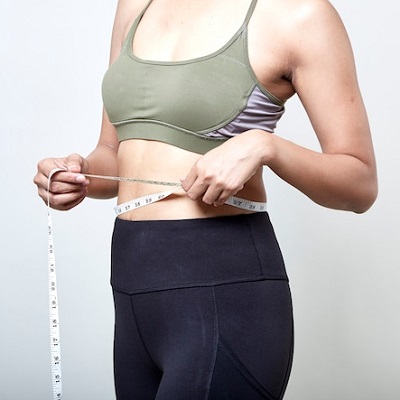
Aging often leads to volume loss in the face, hands, and other areas, making the skin appear saggy and wrinkled. One of the most effective ways to counteract these signs is through Fat Transfer Surgery Oman. This procedure restores youthful contours by using the body’s own fat to rejuvenate targeted areas. Unlike fillers, which provide temporary results, fat transfer offers a more natural and long-lasting outcome.
What Is Fat Transfer?
Fat transfer, also known as fat grafting, is a cosmetic procedure that involves harvesting fat from one part of the body—typically the abdomen, thighs, or flanks—and injecting it into areas that need volume restoration. Since the procedure uses autologous fat, there’s minimal risk of allergic reactions or rejection, making it a preferred choice for those seeking a more youthful appearance.
Benefits of Fat Transfer Surgery
- Natural-Looking Results – Since the procedure utilizes your own fat, the results blend seamlessly with the natural contours of the face or body.
- Long-Lasting Effects – Unlike dermal fillers, which dissolve over time, transferred fat can survive permanently if properly integrated.
- Minimally Invasive – Compared to other surgical anti-aging procedures, fat grafting requires smaller incisions and has a quicker recovery period.
- Dual Benefits – Not only does it add volume to areas that have lost fullness, but it also helps sculpt donor areas by removing excess fat.
How Fat Transfer Works
Step 1: Fat Harvesting
Using liposuction techniques, fat is extracted from donor areas such as the abdomen, flanks, or thighs. This step involves gentle suctioning to preserve fat cell viability.
Step 2: Purification
Once harvested, the fat undergoes purification to remove any impurities, ensuring only healthy fat cells are used for transfer.
Step 3: Fat Injection
Using fine cannulas, the purified fat is strategically injected into the desired areas in small amounts to achieve natural-looking enhancement.
Why Fat Transfer Surgery in Oman Is Gaining Popularity
As a minimally invasive anti-aging solution, fat transfer surgery in Oman has become a sought-after procedure for individuals looking for long-term facial and body rejuvenation. The growing demand is attributed to the increasing awareness of natural enhancement techniques and the ability to achieve customized results without synthetic fillers.
Areas Commonly Treated with Fat Transfer
1. Facial Rejuvenation
Aging leads to fat loss in the face, causing a hollow or sunken appearance. Fat transfer restores volume to the cheeks, temples, and under-eye area, giving the face a youthful plumpness.
2. Hand Rejuvenation
The hands often reveal aging due to thinning skin and visible veins. Injecting fat into the hands restores volume and smooths out wrinkles.
3. Breast Enhancement
For women looking for a natural alternative to implants, fat transfer offers a subtle yet effective way to enhance breast size and shape.
4. Buttock Augmentation
Popularly known as a Brazilian Butt Lift (BBL), fat grafting helps achieve a fuller and more lifted look without the need for implants.
Who Is an Ideal Candidate for Fat Transfer Surgery?
Anyone experiencing volume loss due to aging or weight fluctuations may be a good candidate. Ideal candidates should have:
- Sufficient fat reserves for harvesting
- Good overall health and no serious medical conditions
- Realistic expectations about the results
- A preference for a natural alternative to synthetic fillers
What to Expect During Recovery
After undergoing fat transfer surgery in Oman, mild swelling and bruising are common, but they subside within a few weeks. Most patients can return to normal activities within a few days, though strenuous exercises should be avoided for at least two weeks. Since some of the transferred fat may not survive, surgeons often inject slightly more fat to compensate for natural absorption.
How Long Do Fat Transfer Results Last?
Unlike temporary fillers, fat transfer provides long-lasting effects. While some of the fat may be reabsorbed by the body within the first few months, the surviving fat cells integrate with existing tissue and remain for years. Maintaining a stable weight and a healthy lifestyle ensures optimal, long-term results.
Why Choose Fat Transfer Over Fillers?
- Longevity – While fillers last between 6-18 months, fat transfer can provide permanent results.
- Natural Substance – Since the procedure uses your body’s own fat, there’s no risk of allergic reactions.
- Cost-Effective in the Long Run – Although fat transfer has a higher upfront cost, it eliminates the need for repeated filler sessions.
Preparing for Fat Transfer Surgery
To ensure a successful procedure, patients should:
- Stop smoking at least two weeks before surgery
- Avoid blood-thinning medications unless advised otherwise
- Maintain a healthy diet and hydration for optimal recovery
- Follow all pre-surgical guidelines provided by the surgeon
Potential Risks and Side Effects
As with any cosmetic procedure, fat transfer surgery in Oman comes with minimal risks, including:
- Temporary swelling and bruising
- Uneven fat absorption in rare cases
- Small risk of infection if post-op care guidelines aren’t followed
However, when performed by an experienced professional, the procedure is generally safe and well-tolerated.
Conclusion
Fat transfer surgery is an effective and natural way to restore youthful volume lost due to aging. Whether used for facial rejuvenation, hand enhancement, or body contouring, it offers long-term benefits with minimal risks. The growing popularity of fat transfer surgery in Oman is a testament to its ability to deliver natural-looking and lasting results. For individuals seeking an age-defying solution without synthetic fillers, this procedure provides the perfect balance between beauty and longevity.